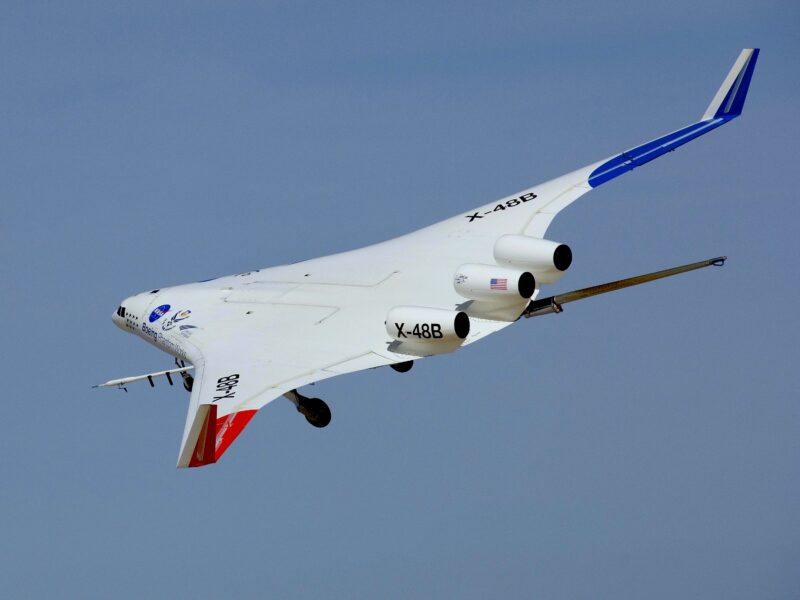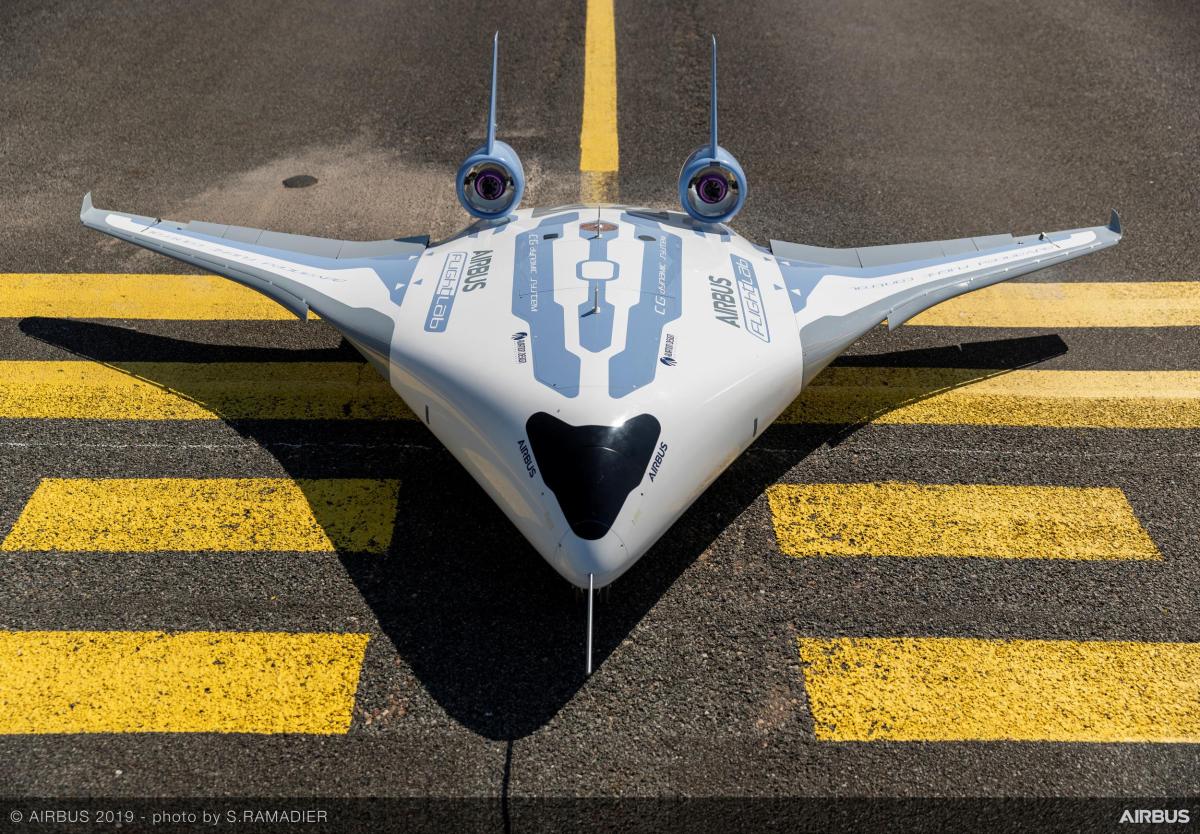Airbus introduces “flying wing” prototype for passengers for the first time
The aircraft manufacturer is testing a small Maveric model with an unusual shape. The planes are to save 20 percent fuel. There are still many problems to be solved before passengers can fly – especially for those who sit on the sides.
The idea for a revolutionary aircraft without the classic shape with fuselage, wings and the tail with vertical and vertical stabilizers is decades old. There are always suggestions for so-called flying wing models, in which the fuselage and wings merge. So far, however, these aircraft have only been practically implemented and used by the military.
At the aviation fair in Singapore, Airbus is now presenting the Maveric model for the first time, its concept for a passenger flying wing aircraft. It is still only a small model, two meters long and a good three meters wingspan, but it has already flown.
Engineers always come up with the flying wing idea when they are looking for new concepts for flying in the future. One of the advantages is that the special aerodynamic shape means that fuel consumption should be up to 20 percent lower than that of a classic aircraft.

Boeing does as well
Competitor Boeing already tested a prototype (X-48B) with a span of six meters in 2007 together with Nasa. Experts speak of a blended wing body, a special form of flying wing.
Airbus remains discreet as to what to do with its Maveric idea. The concept has been quietly worked on for three years. In June 2019 there was a first flight of the small model. The test flights should continue until mid-year. Then it will be decided on how to proceed.
Although there is still no set schedule for the use of the aircraft, the demonstrator could help “transform the architecture of commercial aircraft for an environmentally sustainable future for the aviation industry,” Airbus said. The special shape of the aircraft makes it easier to install new engines.
Disadvantages
One of the disadvantages of the concept is that passengers sitting outside the center of the aircraft feel cornering particularly strongly. The developers try to cushion this with various tricks. In the windowless aircraft, for example, the surroundings are animated.
The passenger cabin of a flying wing can probably not be evacuated so quickly in an emergency. How many seats the Airbus model Maveric should have is still open. It is the size of the A320 class, said a spokesman, so over 100 passengers.
Military personnel have been working on the aircraft idea for some time
Both Airbus and Boeing are faced with the challenge of one day presenting a successor generation for their best-selling A320 and B737 aircraft series, which must be more environmentally friendly. One of the confusing games in the industry is not to inform the competition too early about which successor concept is actually being pursued.
While Boeing and now Airbus only showed smaller passenger-wing models, the military has been using this aircraft idea for some time. During the Second World War the USA (Northrop N-9M) and Germany (Horton H IX) worked on bomber models. Flying wings are popular with the military because they can be better protected against detection by radar beams. The most well-known flying wing models include the US stealth bomber B-2 Spirit.


